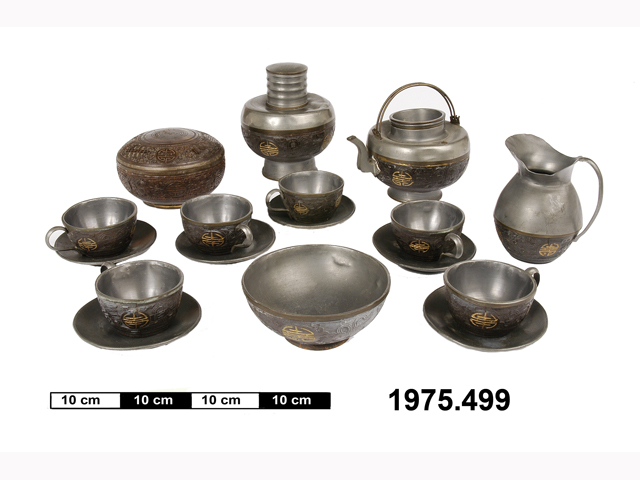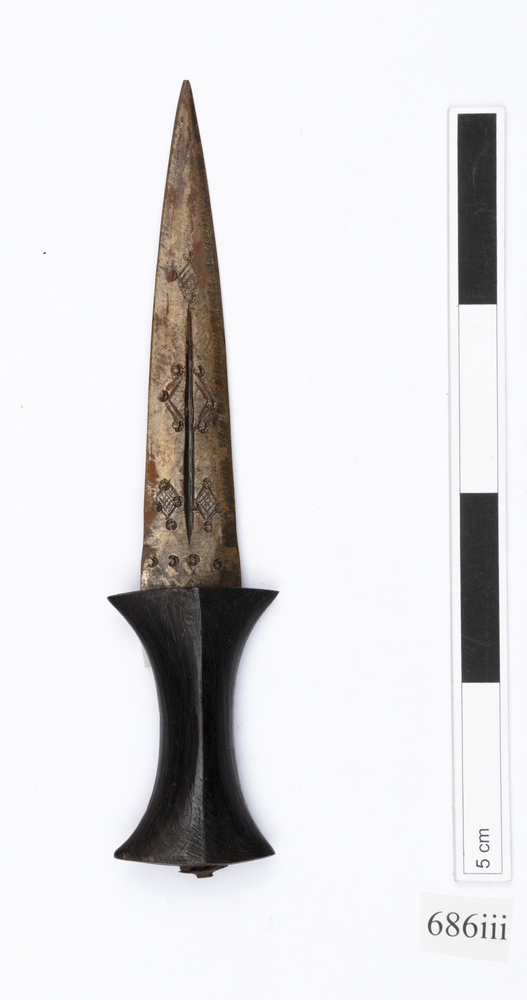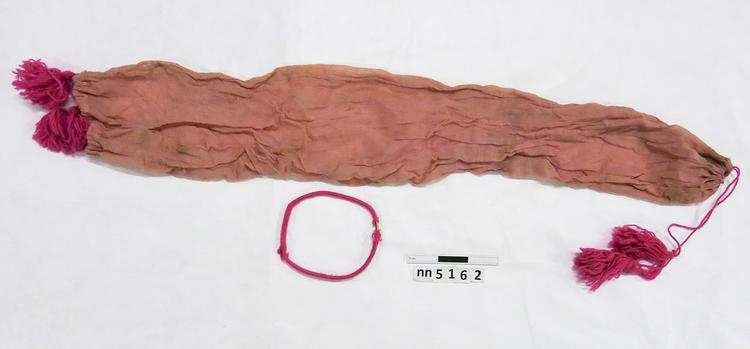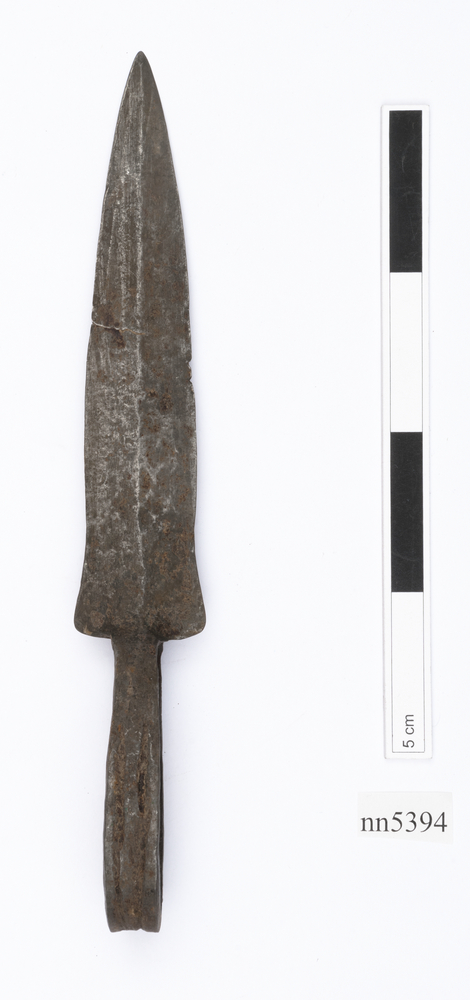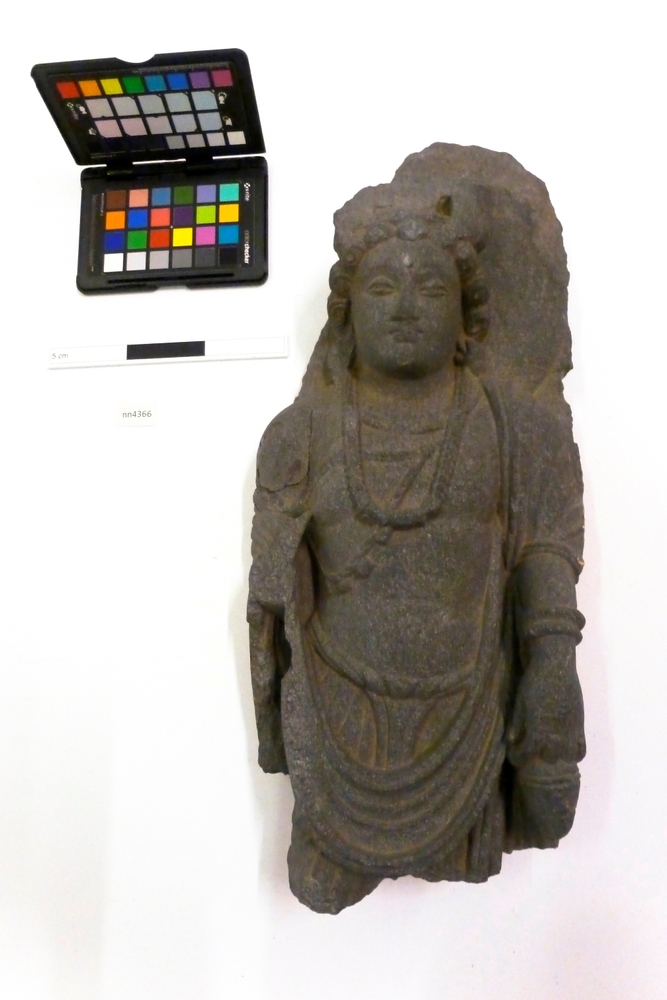
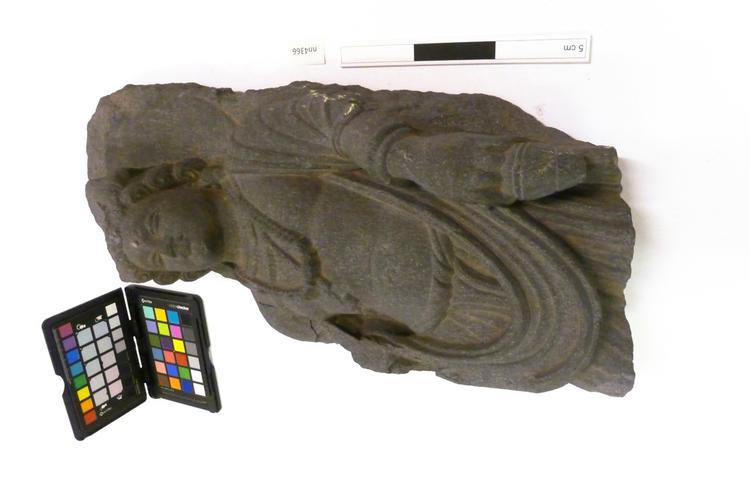
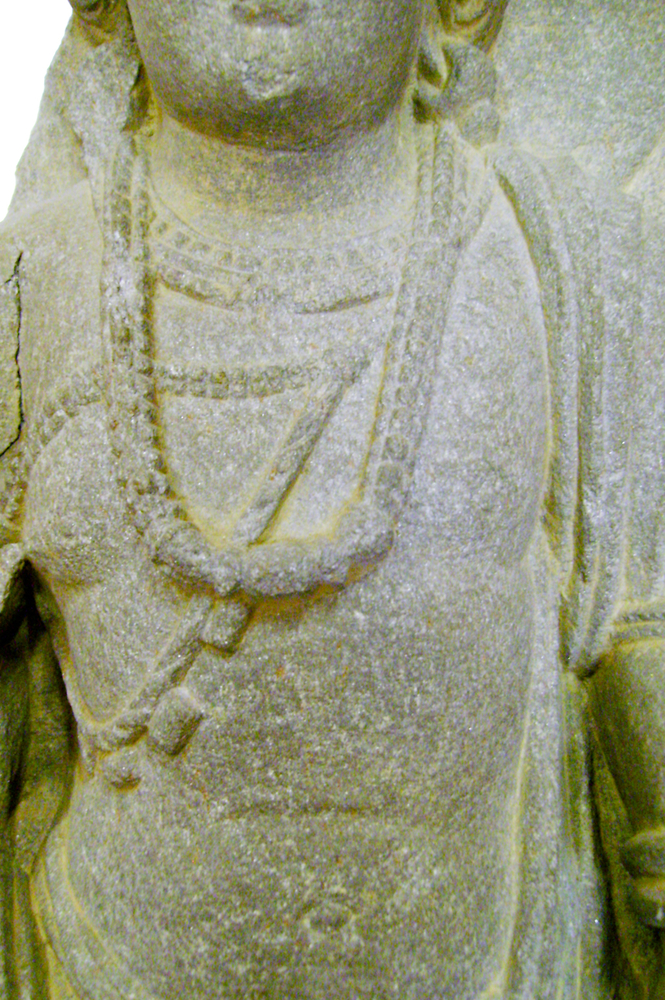
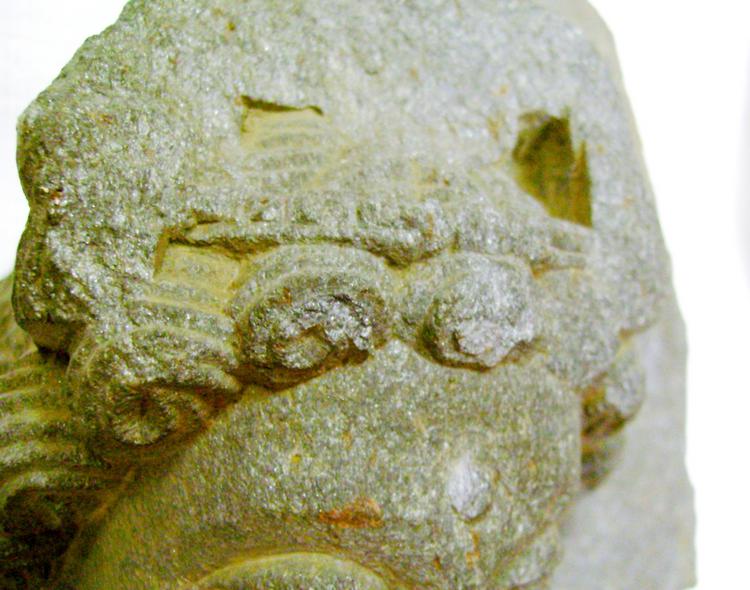
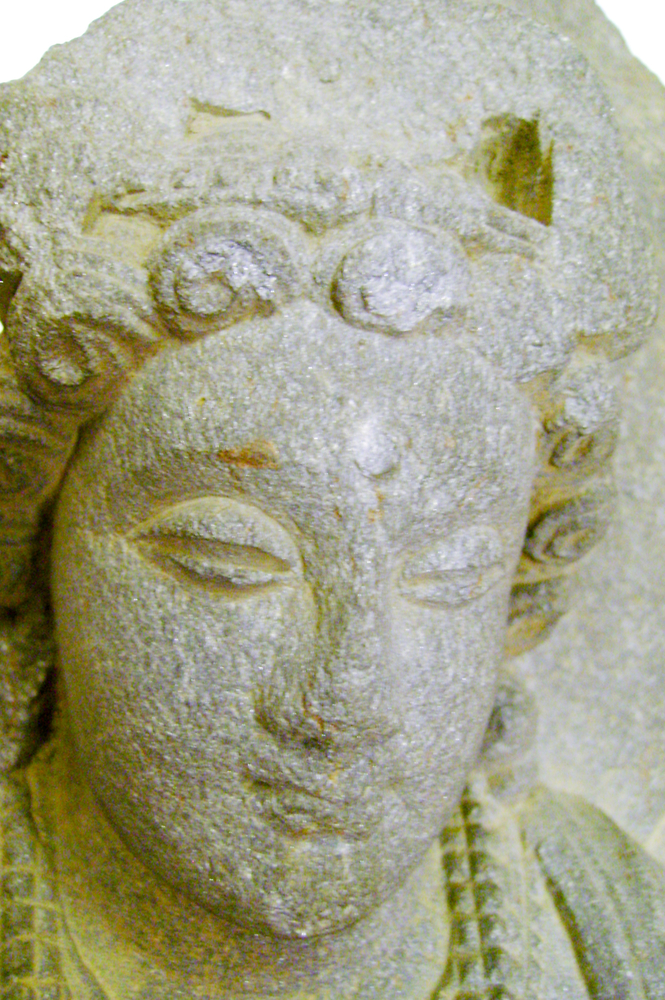
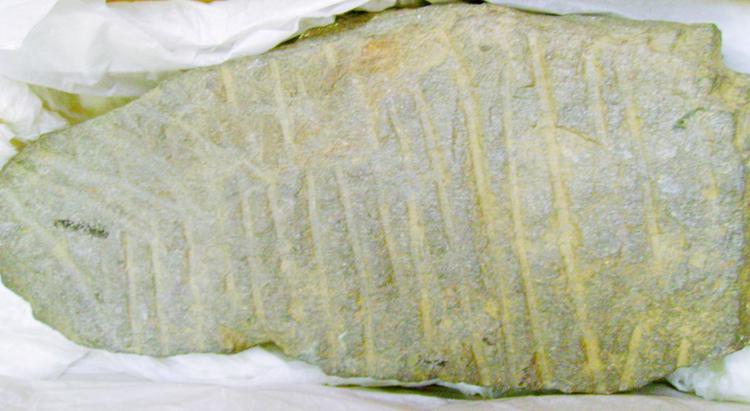
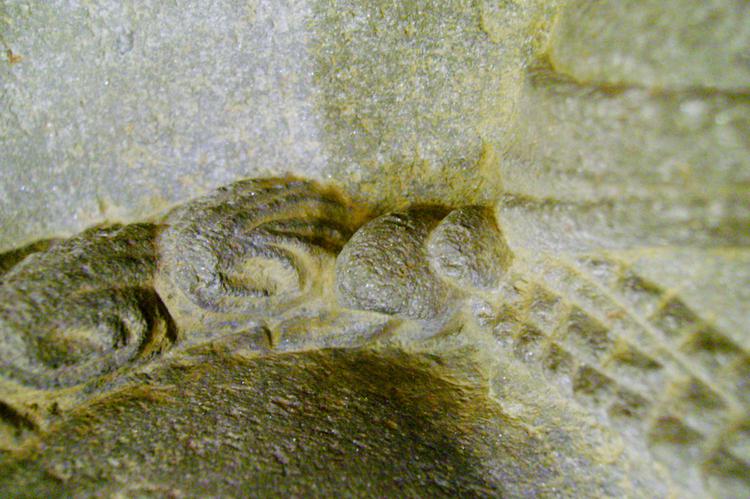
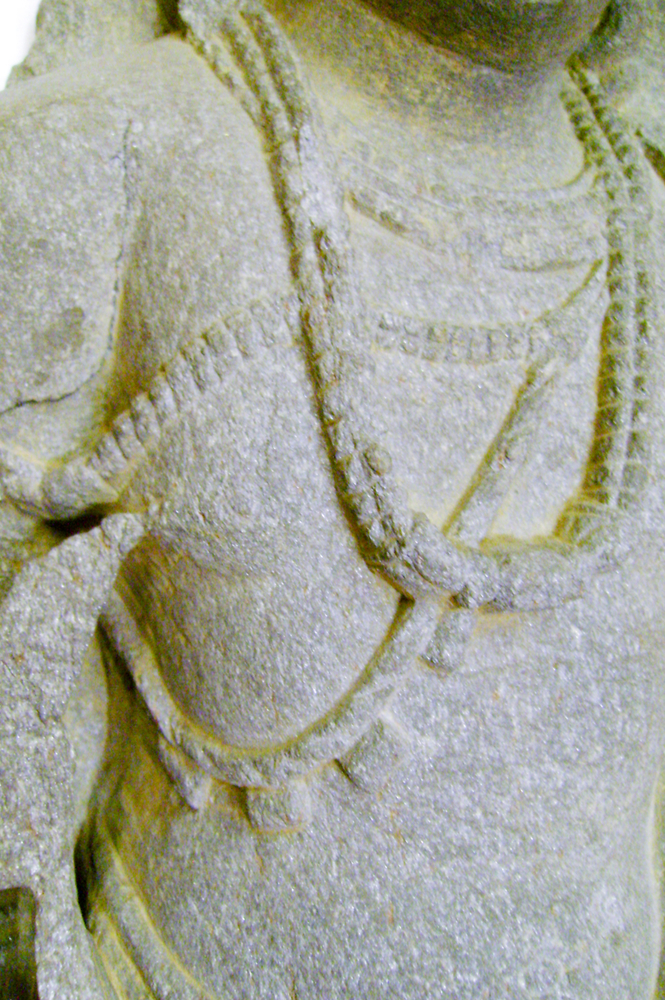
Standing figure of the Bodhisattva Maitreya, with a decorated conical water pot in his left hand. The figure wears a dhoti knotted at the abdomen and around his neck is a generous pleated shawl descending from the neck down nearly to the knees. Over his shoulders (the right one left bare) is a further long pleated textile completing the usual dress ensemble of this popular icon. On his left arm at least is a pair of heavy bangles.The legs are missing, along with the raised right hand and much of the halo and surrounding background. The right had, which is missing, would originally have been in abhaya mudra.
A standing figure of the Bodhisattva Maitreya, originally with right hand in abh�ya mudra (a gesture offering peace), and with a decorated conical water pot in his left hand (Sanskrit: a Kumbha or wisdom urn and a symbol of life and fertility). Maitreya is one of the most common images depicted in Gandharan art (see Zwalf 1996). Here the legs are missing, along with the raised right hand and much of the halo and surrounding background. The figure wears a dhoti knotted at the abdomen and around his neck is a generous pleated shawl descending from the neck down nearly to the knees. Over his shoulders (the right one left bare) is a further long pleated textile completing the usual dress ensemble of this popular icon. On his left arm at least is a pair of heavy bangles. This figure is bare-chested, has thick curls framing the face, a prominent ūrṇ� on the forehead, and a moustache. A large reliquary or set of beads is suspended from the neck by a thick cord or chain below a shorter necklace consisting of three strands of large beads. Commonly, the large ‘bead’ at the centre of the thick necklace joins the cord at both ends by a pair of open-mouthed makaras (mythical crocodiles), as appears to be the case in this instance. Over the left shoulder and under the right arm is a further probably beaded string in two parts, the lower of which carries a set of at least three beads or containers (probably for relics). There appears to be the usual elaborate headdress and coiffure of a bodhisattva. This bodhisattva image was erected in a Buddhist shrine or temple, in a niche or some safe place attached to a wall or pedestal with iron clamps most likely. The reverse of the object is marked by deeply scored parallel chisel incisions. Few of such images are likely to have been free-standing, particularly if the back is flat. There are no signs of niches for clamps, except, perhaps on the proper left of the figure. It is a votive and symbolic object, worthy of veneration and upon which devotees may meditate. There is no findspot or archaeological context known for this piece, and no apparent way of tracing this information beyond the fact that it is inscribed in black crayon with the number '1’. Other pieces in this collection are similarly inscribed in black with other numbers, forming a kind of sequence and so an indication of a relationship with each other (both in provenance and acquisition terms). Made from grey micaceous schist, the typical medium of almost all Gandharan sculpture of this period. 2nd or 3rd centuries in date.



